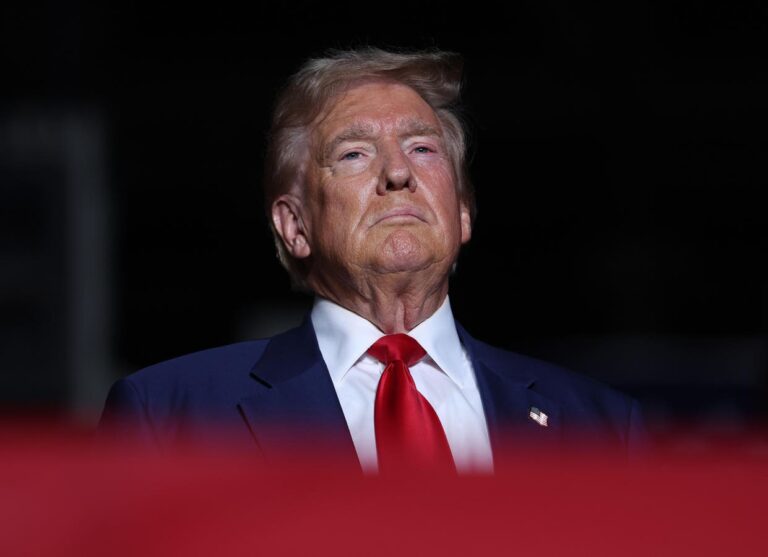Donald Trump, price of Bitcoin
Bitcoin rebounded early Tuesday morning, fueling hopes that the symbolic $100,000 mark is within reach.
Over the past 24 hours, Bitcoin’s price rose 6.8% to $87,600, while Ethereum’s price rose 3.3%. Many altcoins have followed suit. Avalanche is up 8.4%, Dogecoin gained 35.1%, Shiba Inu added 2.5%, BNB rose 1.1% and XRP saw a 9.9% rise.
While Trump’s election victory might be the main driver at the moment, it is far from the only factor fueling Bitcoin’s rise.
Behind the scenes, broader trends – from a supply halving to favorable macroeconomic developments – are helping to drive up cryptocurrency prices.
Crypto insiders believe these factors, rather than Trump’s victory, are the real long-term drivers of Bitcoin’s rise.
Trump’s victory is a short-term catalyst but not a game-changer
Trump’s return to the White House certainly made headlines last week. The reason? Trump is seen as less of a “bad cop” to the crypto community than the Biden administration.
There is a good reason for this.
In preparation for this year’s elections, Trump became the first presidential candidate to accept crypto contributions. At one point, he even hinted at the possibility of establishing a federal Bitcoin reserve.
“For too long, our government has violated the cardinal rule that every Bitcoiner knows by heart: never sell your Bitcoin,” he said.
To counterbalance Biden’s more aggressive regulatory stance, crypto lobbyists have also rallied behind Trump.
Notably, Cameron and Tyler Winklevoss, co-founders of crypto exchange Gemini, contributed $1.6 million in Bitcoin, while Kraken co-founder Jesse Powell donated $845,000 in Ether.
Last August, Arthur Hayes, co-founder of BitMEX, predicted that a Trump victory could push the price of Bitcoin beyond $100,000.
“October and November are historically strong months for Bitcoin, especially the year of the halving and the year after,” he said, suggesting a Trump presidency could cause a “rush of new buyers ” which could push Bitcoin “above $100,000”.
Still, Hayes and others believe the election outcome could only influence the near-term price of Bitcoin.
They say it is bitcoin’s fundamentals and macroeconomic factors – particularly its appeal as a hedge in a highly leveraged and inflation-prone economy – that will shape its long-term trajectory.
Broader Factors Behind Bitcoin’s Rally
Some analysts say this rally is more due to pent-up demand resulting from April’s Bitcoin halving, a pre-planned reduction in Bitcoin mining rewards.
“Yes, the new pro-Bitcoin administration has provided a recent catalyst, but that’s not the point here,” Jesse Myers, co-founder of Onramp Bitcoin, said on X yesterday.
“The result is a bubble after the halving,” he added, referring to the model that every Bitcoin halving has historically sparked a rally.
Another key factor is Bitcoin’s potential role as a hedge against currency depreciation. Hayes echoes many economists who believe neither political party has the desire to balance the budget.
In August, Hayes said: “Like any politician, regardless of party affiliation or economic beliefs, Harris will ask Yellen to use the monetary tools at her disposal to avoid a financial crisis.” »
This reinforces his belief that inflation-driven spending could become a reality regardless of the election outcome.
Nevertheless, Bitcoin must first prove itself as a hedge against inflation, because so far it has behaved more like a risk asset – rising and falling in tandem with the risk appetite of the investors.
Wall Street’s In-Depth Crypto Ties
Another force driving Bitcoin’s valuation is growing interest from Wall Street.
In recent months, financial giants like Goldman Sachs and Morgan Stanley have expanded their Bitcoin holdings, signaling that institutional players view the cryptocurrency as more than a speculative asset.
According to Matt Hougan, CIO of Bitwise Asset Management, institutional involvement adds both credibility and stability to Bitcoin’s long-term prospects, making it less prone to the extreme volatility seen in past cycles.
“Institutions see the transformative potential of Bitcoin for certain financial processes, making it not only an alternative asset, but also a potential building block in future portfolios,” Hougan noted recently.
With political and economic factors in Bitcoin’s favor, the coming weeks could be crucial in determining whether the cryptocurrency continues its steady rise.

